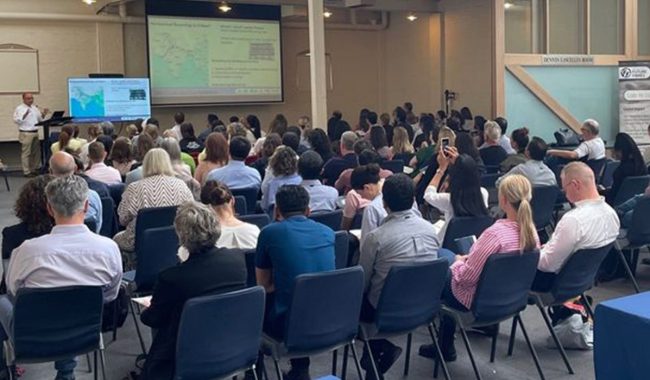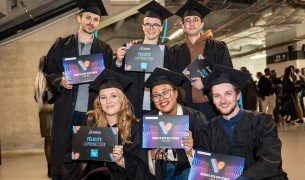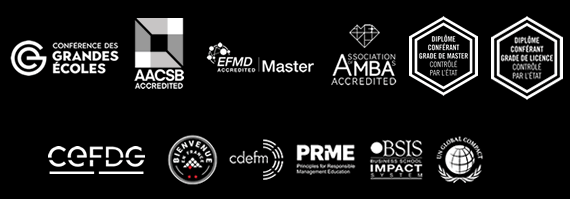Emmanuel Josserand, professor-researcher at EMLV, contributed his expertise as a panellist at the 2024 Sustainable Fibres Symposium. The symposium, a crucial gathering for the textile and fashion industries, brought together researchers, brands, designers, and policymakers to explore innovative approaches to recycling and sustainability, particularly in response to the sector’s complex environmental challenges.
Emmanuel Josserand’s insights focused on emerging recycling technologies and their potential to “close the loop” in the fashion industry, a critical step toward achieving sustainable and circular textile production.
Exploring New Business Models in Fashion
In a panel session that examined current and emerging business models, Professor Josserand shared his perspective on the diverse strategies shaping the future of fashion.
He provided a balanced view of these models’ “good, the bad, and the ugly” aspects, from ultra-fast fashion to sustainable alternatives. His observations highlighted the growing alignment among businesses, governmental entities, and researchers, particularly in Australia, as they seek to address the environmental impact of fashion production.
This alignment reflects a shift towards collective responsibility across sectors to create a more sustainable and ethical fashion ecosystem.
The Fibre Value Chain: A Collaborative Approach to Sustainability
The 2024 Sustainable Fibres Symposium emphasized the complexity of the fibre value chain, which includes a broad spectrum of stakeholders—researchers, manufacturers, brands, designers, recyclers, and consumers—each with varying degrees of influence and sometimes conflicting interests.
Designing sustainable solutions across this landscape presents a formidable challenge, requiring alignment and collaboration. The symposium fostered dialogue among these groups, promoting shared goals and innovative solutions to textile waste and sustainability.
Key Themes and Program Highlights
The symposium featured various sessions focused on the sustainability puzzle, providing a comprehensive overview of the challenges and potential solutions in fabric and textile sustainability. Highlights included two core thematic areas:
Theme 1: Quantifying and Qualifying the Fabric and Textile Waste Problem
This theme addressed the need for accurate data and impact assessment within textile waste management, with sessions covering:
- Quantifying the scale of textile waste to understand the environmental impact better.
- Research the effects of nanoplastics, particularly their impact on marine ecosystems.
- Collaborative efforts in citizen science, such as the GLOBE Program, to foster public involvement in environmental monitoring.
- Innovations in composting for garment fabrics and textiles, exploring biodegradable options.
- The Simba Global Hub Research Project is a collaborative initiative to reduce waste.
Theme 2: Sustainable Design at the Fibre Level
Focusing on materials, this theme addressed sustainable design practices in fibre production, with sessions that included:
- The potential of bioderived fibres as alternatives to synthetic options.
- A discussion on ULUU’s innovative approach to synthetic fibres, reimagining their environmental impact.
- A panel discussion on the challenges, successes, and future opportunities for bioderived fibres.
- An exploration of strategies to reduce reliance on polyester, a prevalent but environmentally taxing material in fashion.
The Sustainable Fibres Symposium
The Sustainable Fibres Symposium offered value for various stakeholders, including fashion brands, suppliers, retailers, designers, sustainability experts, recycling enterprises, environmental advocates, government decision-makers, and academic researchers.
Each participant stands to gain from the collaborative insights and forward-thinking solutions discussed, as the event seeks to catalyze action across the textile value chain. The symposium highlighted the urgent need for systemic change in the textile and fashion industries.
Through shared knowledge, collaboration, and innovative solutions, stakeholders from various sectors are better equipped to tackle sustainability challenges within this industry, paving the way toward a more resilient and responsible future for fashion.


















